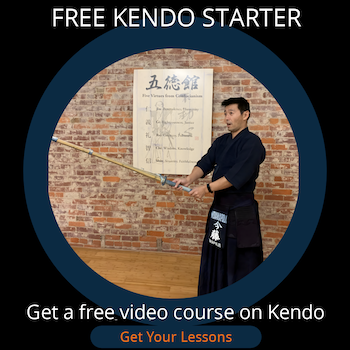You Got It!
What is shikake waza?
There are two categories in techniques in kendo; shikake waza and ōji waza. In this document, we are going to dive into one of them; Shikake Waza, translating to “techniques that you initiate”. Remember, in shikake waza you are the one who initiates the attacking, as you will see in these demonstrations.
Important Point: You decide when to strike at which part of your shinai passes which part of your opponent’s shinai. On the bamboo stick or shinai, there are the first joint, the second one, and nakajime. They are good indicators or marks for you on when you execute your strike. You decide when you are going to strike, that is the first thing you decide if you are a shodan, ni-dan or san-dan.
Click here to check out the video.
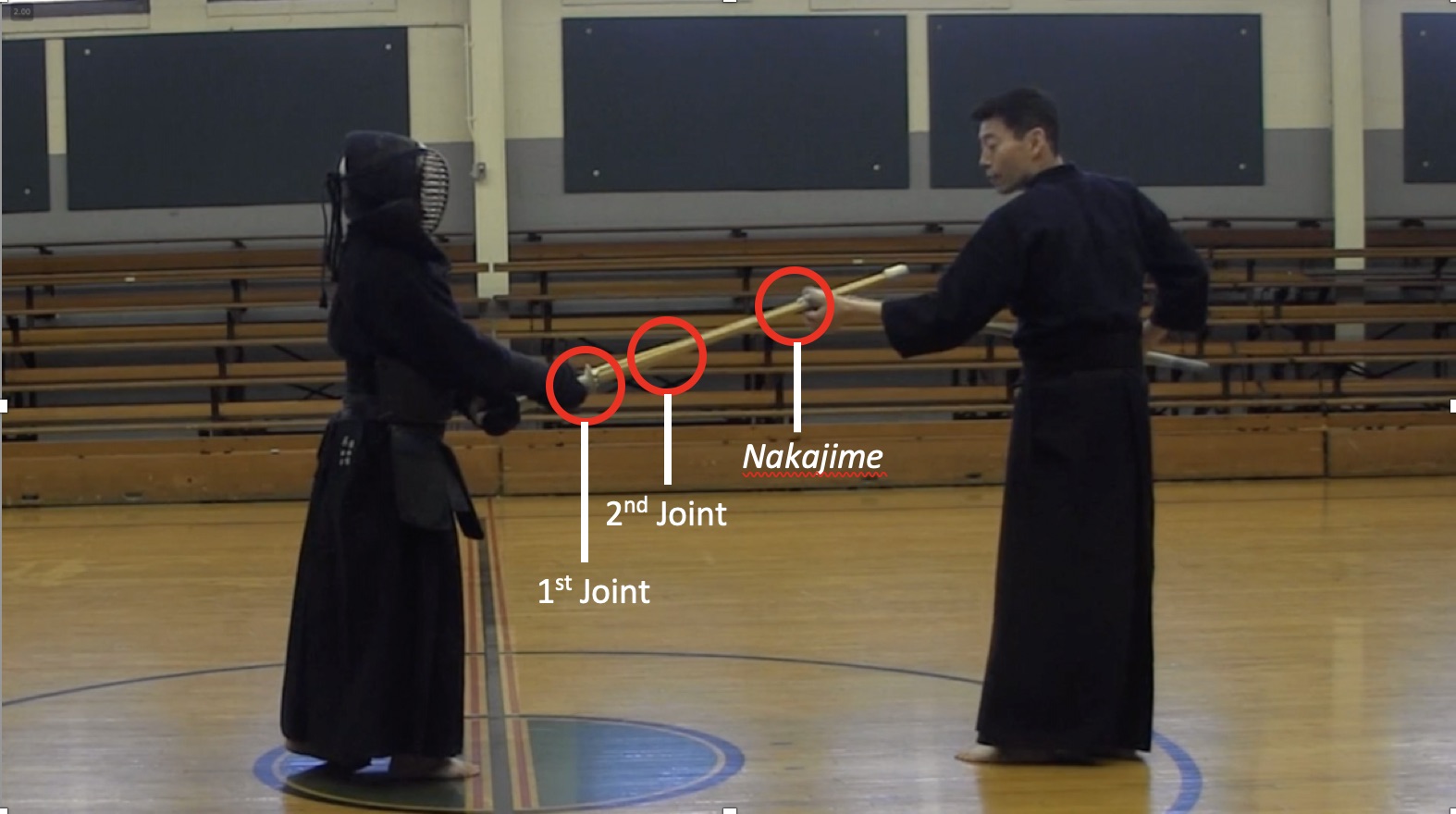 3 Marks for You on When to Strike
3 Marks for You on When to StrikeFor example, you get in so your kensen is at your opponent’s nakajime. You stay there, and have your opponent come forward; then strike (below).
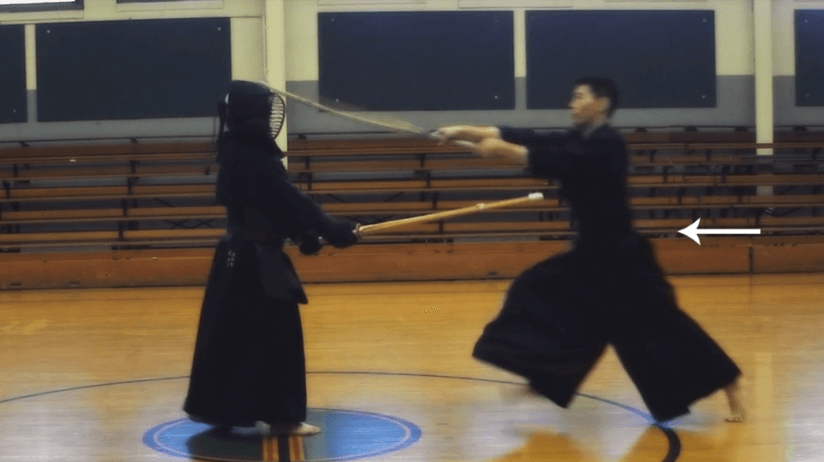 When Your Opponent is in Your Striking Distance, Execute Your Strike
When Your Opponent is in Your Striking Distance, Execute Your StrikeThat way you will start learning your distance and when you should strike so you can reach your opponent. The picture below indicates the distance that it is a bit far for me and probably your opponent too.
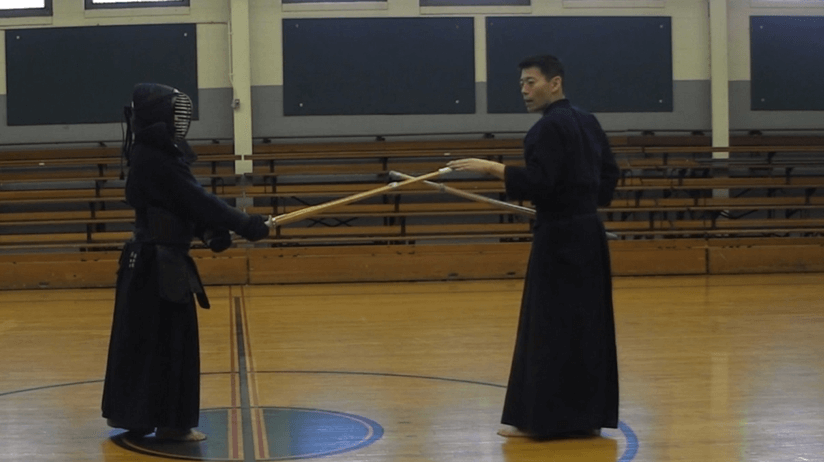 The Distance that Is A Bit Too Far to Reach
The Distance that Is A Bit Too Far to ReachThis is something to do with “seme”, but because you’re shodan, ni-dan and san-dan, don’t worry about it too much. You will need it when you become 4-Dan; or going for 4-Dan.
You will get close, but this is no one’s distance (as seen in image above). You cannot reach from here. You technically can but it’s easy for the opponent to know that you are striking. Then they will block it. That’s why you stay at that distance. At that distance, you are talking to your opponent, “What are you going to do?”. Then when your opponent is coming forward and you can strike his/her men.
In the scenario above, before I do jigeiko or put my men on for a basic drill, I am already determined to strike when my opponent comes in to my distance. When he passes and when he comes into this distance, I’ll strike (below).
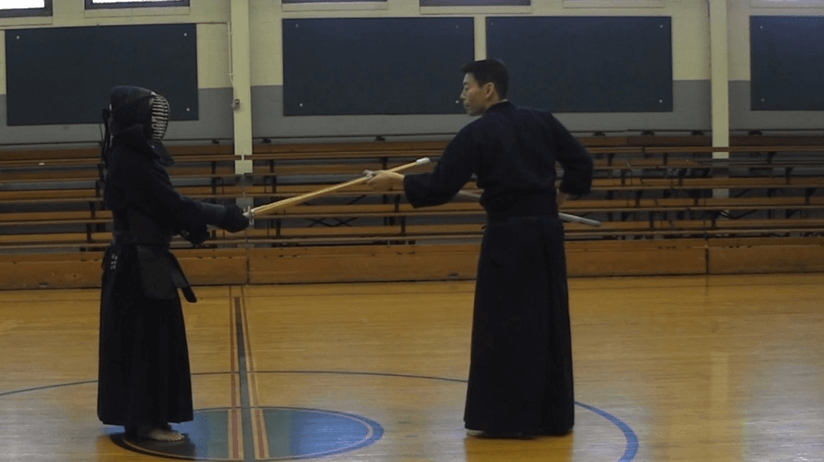
PRACTICE SHIKAKE WAZA
You can have this drill at the dojo.
- You get into a distance a little before your striking distance
- Your partner comes into your distance when they think you are ready, then
- You strike
This is very important for shodan, ni-dan, and san-dan, because if you don’t know when to strike or when to execute your strike, you cannot do any “Ōji Waza”. It is very important for you to know when to strike and at which distance and timing.
If you are standing at a distance thinking “I am not going to go. It’s not my distance”, but if the opponent comes into your distance, then strike.
You practice this very well. When you get this idea and do the drill, you will start understanding the concept of “degashira” or “debana”. For example, your opponent comes in because he/she wants to strike you, maybe he/she is coming to strike your men. And you execute a men strike on him/her. When the timing is right, it will become “degashira men” or “debana men”. “Degashira men” is when your opponent is just about to execute a strike, you strike his/her men.
Your opponent might be coming to your kote, but you can get him, when the concept works. This is because you already have the initiative. Once you pass this line [see below], you’re already determined.
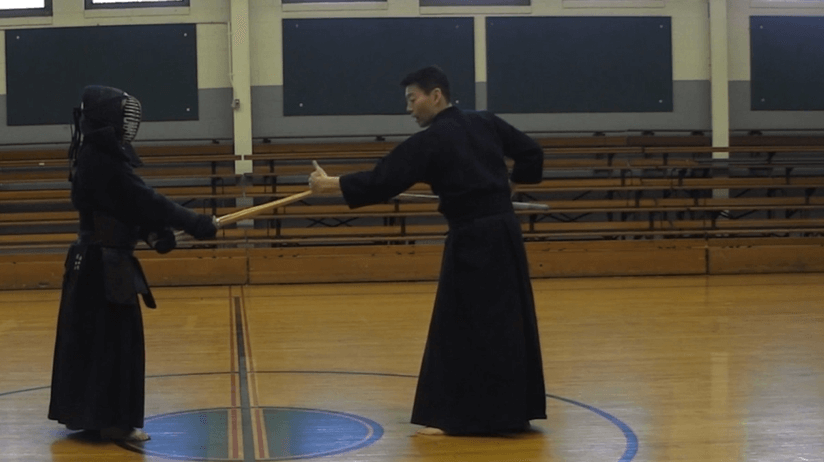 You Need a Line to Execute a Strike
You Need a Line to Execute a StrikeThis concept is important for shodan, ni-dan and san-dan levels. This is to master “shikake waza”. Now you know the concept so go and practice that with your kendo mates!
DEBANA WAZA
Once you get the idea of shikake waza, you can understand the concept of debana waza. Have yourself at the distance (see below), either you can get in or he can come in to the striking distance. You can go in from here, and the opponent is probably going to strike your men. You can strike kote, that becomes “debana kote”.
 Critical Distance for You and Your Opponent
Critical Distance for You and Your OpponentDrill Example: You and your partner is in a distance a little bit short for both to reach targets.
A. Ask your partner to execute a men strike when he/she is ready, and then you strike men. (debana men)
B. Ask your partner to strike your men, whenever he/she is ready, and you execute a kote strike. (debana kote)
If you find it hard to perform debana men or debana kote, do the following.
- Get into your striking distance
- Verbally ask your partner to strike your men
- You strike their men
Motodachi shouldn’t open their targets (men or kote) because that never happens in the kendo matches (jigeiko as well).
Once you get used to the movement through the above-mentioned drill then do the following.
- Stay closer (see below) and
- Have your opponent move a little forward (just body, without taking a step forward),
- Sense it and strike.
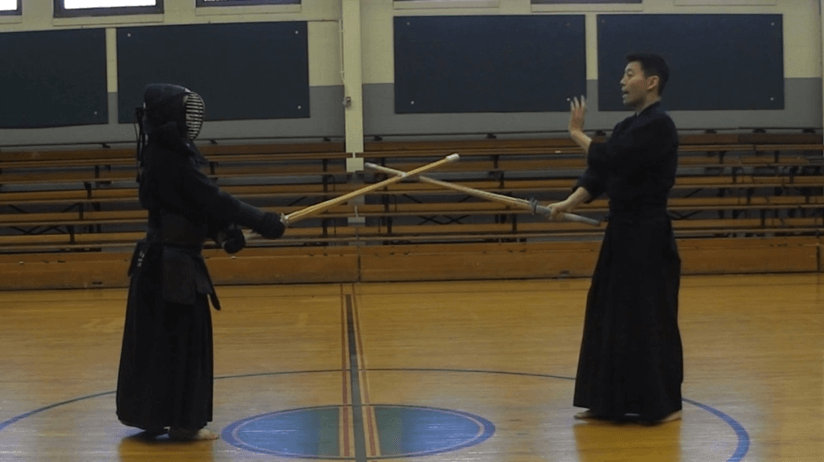 Always Back to The Easiest Drill for Further Improvement
Always Back to The Easiest Drill for Further ImprovementWhen you’re closer, all you have to do from that position is sense and go. Have him move a little bit, start from here. It’s very important to get the idea of “when you strike”.
You get used to the movement and timing. Do this. Start at shokujin no ma and then get in a little bit. Your partner comes forward and then strike, so make sure you are ready.
In this practice as well, you can tell your partner to come forward. Make sure you start from shokujin no ma.
- You will move a little forward,
- Tell your opponent to come and then
- You strike.
There doesn’t have to be silence. Remember you are practicing!
ALWAYS READY
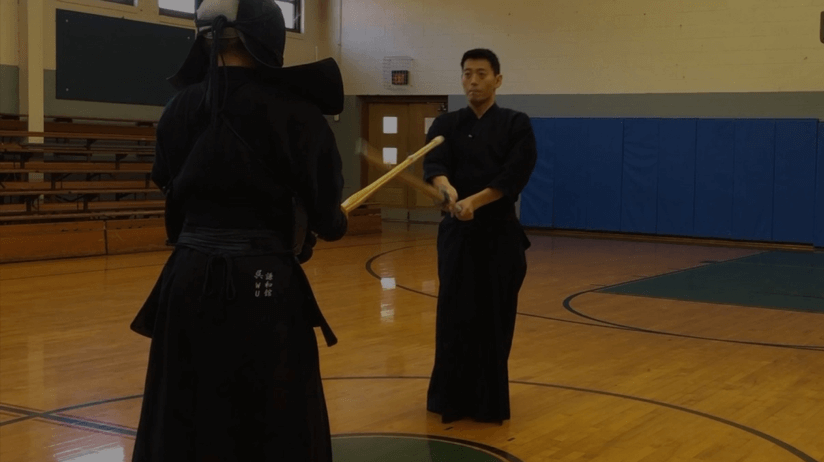 Must Be Always Ready
Must Be Always ReadyThe key element of this or basically in kendo is “you must be always ready”. Some people are just really hesitant and don’t have the right posture. Make sure, that however you move, you are ready.
Many people just move around. Keep the good posture and then move. Once moved, come back to the position so you can strike anytime.
Moving has a purpose. That is, you position yourself better than your opponent’s. So once you take that better position, you should execute your waza. Remember that.
watch the video
"Kendo Guide for The Intermediate" is available at Vimeo. Stream the videos on your smart device/TV or you can download them. The written instructions are also available for you to download.
No shipping info or waiting time needed. The Exam won't wait for you. Start right way.
